EEG: ANALYTICAL APPROACHES AND APPLICATIONS
VIRTUAL SYMPOSIUM
June 6 – 7, 2019
The EEG is a cost effective and noninvasive tool to measure electrical signals from the brain with the potential for tremendous clinical and diagnostic relevance. To realize this potential there are numerous approaches to analyzing the EEG signal that can be considered in order to identify meaningful patterns and structures. This virtual symposium brings together researchers working on various analytical approaches to EEG, as well as brain signals at different levels of resolution (e.g. LFP and ECOG) and their application to a number of different conditions from pain, sleep and anesthesia to cognitive health.
The conference will be organized into sessions around four themes.
- Potential Biomarkers and Applications of EEG
Recent advances in the prediction of brain states such as pain, fatigue, sleep, anesthesia and cognitive health - Novel Analytical Approaches to the EEG Signal
New ways to look at the EEG signal, particularly showcasing ideas from other fields such as LFP analysis and speech processing. - Common Methods, Challenges and Pitfalls in EEG Analysis
These tutorial style sessions will cover common methods used in EEG analysis and some of the methodological challenges and pitfalls that can arise. - EEG Resources, Toolkits and Repositories
Presentations of various code libraries, pipelines, data repositories and other resources for EEG.
FORMAT
The symposium will be held online and talks will be 25 mins in length including time for questions. Some tutorial style sessions will be up to 45 mins. A link with login information for access to the online symposium along with access instructions will be shared with registered participants a week prior to the symposium.
Registration will open on April 10 at which time more information will become available on conference program and speakers.
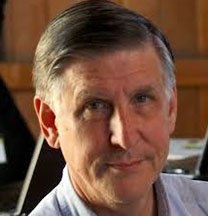
Dr. Scott Makeig
Director, Swartz Center for Computational Neuroscience, Institute for Neural Computation, UCSD
Dr. Makeig is a pioneer in the analysis and modeling of human cognitive event-related dynamics captured by high-dimensional EEG and MEG. He has developed numerous analytical approaches and is the originator of the widely used EEGLAB signal processing environment for MATLAB. Combining EEG with eye tracking and body motion capture he has also pioneered the field of mobile brain/body imaging (MoBI).
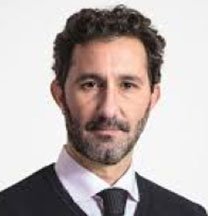
Dr. Carl Y. Saab
Associate Professor, department of Neurosurgery and department of Neuroscience, Brown University Warren Alpert Medical School and Rhode Island Hospital
Dr. Saab is Director of the ‘Pain & Neural Circuits Center’ at Rhode Island Hospital where he performs pre-clinical and clinical studies to elucidate the mechanisms of sensory perception in the brain using electrophysiological, optogenetic and computational techniques. The primary effort is to identify an objective pain ‘biosignature’ in animals and humans and the development of an objective pain assessment device to monitor and better manage chronic pain conditions.
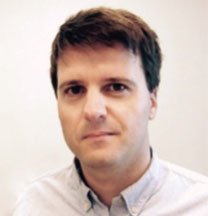
Dr. Christian Meisel
Computational Neurology
Harvard Medical School
Dr. Meisel’s interests lie at the intersection of physics and medicine with specific focus on basic and translational research in neurology. His long-term goal is to enhance diagnostics and treatment options for epilepsy patients, sleep disorders and other neurological conditions. To this end, he is developing and applying novel tools from physics and dynamical systems theory to the analysis of neuronal activity patterns underlying these diseases.
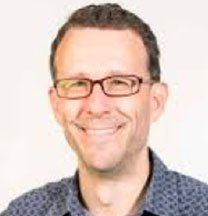
Dr. Brian Murphy
Chief Scientific Officer, BrainWaveBank, Ireland
Visiting Faculty in Data Science, Queen’s University Belfast
Dr. Murphy’s research focus at BrainWaveBank is on the use of machine learning and other advanced numerical techniques to detect and track the progression of neurocognitive and neuropsychiatric conditions. The company’s mission is to make frequent sampling of clinically relevant EEG activity available to all, with user-friendly wearable and gaming technologies.
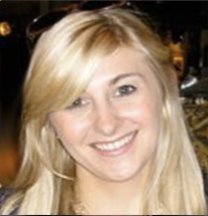
Dr. Sarah Eagleman
Postdoctoral Scholar, MacIver Lab, Department of Anesthesiology, Perioperative and Pain Medicine
Stanford University
Dr. Eagleman is interested in understanding brain states that exhibit altered states of consciousness. In particular she is interested in how different anesthetic agents interact with different neuromodulatory systems to produce behavioral outcomes such as sedation and unconsciousness. She is currently exploring different computational approaches to quantifying anesthetic depth using EEG.
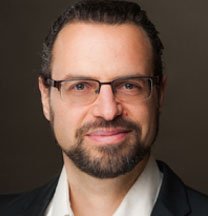
Dr. Arnaud Delorme
Principal Investigator, CNRS, Toulouse, France
Adjunct Faculty, University of San Diego California
Dr. Delorme is focused on the statistical analysis of EEG recorded during various cognitive tasks. He developed the free EEGLAB software for advanced analysis of EEG signals in collaboration with Scott Makeig, software which is now amongst the most used in EEG research worldwide.
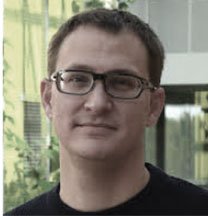
Dr. Alexandre Gramfort
Researcher Inria, Parietal Team University of Paris-Saclay
Dr. Gramfort works on statistical machine learning, signal and image processing, optimization, scientific computing and software engineering with primary applications in brain functional imaging (MEG, EEG, fMRI).
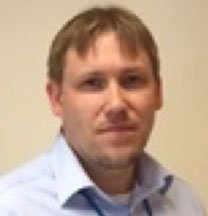
Dr. Cyril Pernet
Senior Academic Fellow in Neuroimaging Sciences
Centre for Clinical Brain Sciences, The University of Edinburgh
Dr. Pernet focuses on methodological development that allows neuroimaging (MRI, PET, EEG) to be applied in day-to-day clinical settings. His interests are in studying cognition (vision, audition, and language), brain disease (stroke, brain tumour, development disorders). He is also the lead author of the Brain Imaging Data Structure (BIDS) framework for EEG described here.
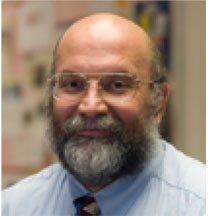
Dr. Joseph Picone
Professor of Electrical and Computer Engineering
Temple University
Dr. Picone leads the Neural Engineering Data Consortium (NEDC) that generates and curates big data resources to support application of state of the art machine learning algorithms to bioengineering problems. NEDC distributes a variety of resources including signal and image data, software to facilitate common evaluations and visualization tools.
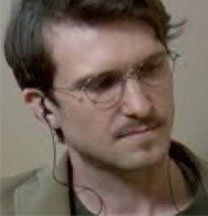
Dr. Tim Mullen
CEO and Research Director, Intheon Inc.
Dr. Mullen’s work has focused on the use of machine learning and adaptive system identification techniques applied to non-invasive and intracranial electrophysiological data (e.g. EEG, ECoG), to detect mental states and neuronal pathologies. He has advanced widely used software for neural signal analysis and state decoding and lead high-profile mobile brain imaging projects such as the “Glass Brain”.
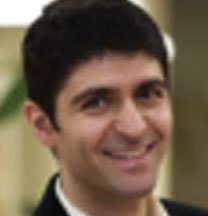
Dr. Iyad Obeid
Associate Professor of Electrical and Computer Engineering and Bioengineering
Temple University
Dr. Obeid focuses on recording and decoding signals from neural tissue including applications for brain computer interfaces, brain-in-a-dish studies, and traumatic brain injury. His lab has made extensive use of Field Programmable Gate Array (FPGA) technology to make and decode massively parallel neural recordings as well as methods from speech and audio processing in the analysis of EEG.
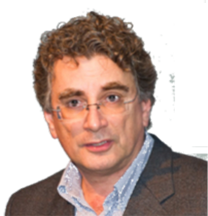
Dr. Dietmar Plenz
Chief, Section on Critical Brain Dynamics
NIMH/National Institutes of Health
Dr. Plenz studies the self-organization of neuronal networks at different scales and across species from rodents to monkey to humans using a combination of electrophysiological and imaging techniques and modeling. Particularly, he has pioneered the statistical description of neuronal avalanche dynamics and their relationship to our understanding of brain states.
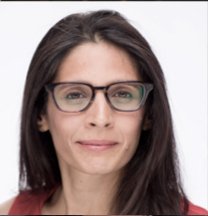
Dr. Tara Thiagarajan
Chief Scientist, Sapien Labs
Dr. Thiagarajan is interested in the application of EEG at scale to enable the understanding of inter and intra individual variability in brain dynamics across diverse human populations, and their relationship to environment and behavioral outcome.
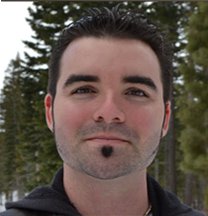
Dr. Bradley Voytek
Associate Professor of Cognitive Science, Neuroscience, and Data Science
University of California, San Diego
Dr. Voytek studies the role of neural oscillations and neural noise in cognition, aging, and disease using both EEG and ECoG recordings and large scale data-mining to discover neural features that are informative of cognitive states.
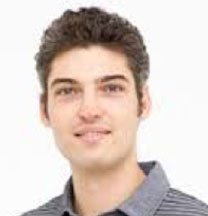
Dr. Andre Bastos
Postdoctoral Associate
Picower Institute for Learning and Memory, Massachusetts Institute of Technology
Dr. Bastos studies top-down and bottom-up interactions in the visual and attention systems, their mechanisms, and how they are modulated by exogenous (e.g., salience) and endogenous factors (e.g., attention, expectation) at different scales of measurement from LFP to EEG.

Dr. Jennifer Newson
Lead Scientist, Cognitive and Mental Health Assessment, Sapien Labs
Dr. Newson(formerly Summerfield) has research interests in assessment of cognitive capabilities and mental health symptoms and their signatures in the EEG. She is particularly interested in cross-symptom and disorder paradigms. She has a background in Cognitive Neuroscience.

Dr. Narayan P. Subramaniyam
Postdoctoral Fellow, Aalto University, Finland
Dr. Subramaniyam’s interest lies in the development of signal processing algorithms and their application to EEG, MEG and other neural time series.
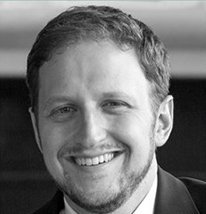
Dr. Michael Prerau
Assistant Professor of Anesthesia, Harvard Medical School
Department of Anesthesia, Critical Care, and Pain Medicine,Massachusetts General Hospital
Dr. Prerau’s interests focus on experimental and computational approaches to understanding the neural correlates of consciousness in humans—specifically how sleep affects the brain. He specializes in developing novel statistical signal processing algorithms for the analysis of neural data, with direct applications to basic science, biomarker discovery, and medical device development.
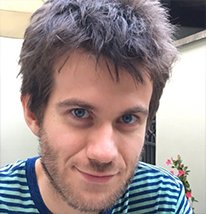
Dr. Michele A. Colombo
Department of Biomedical and Clinical Sciences “L. Sacco”,
Università degli Studi di Milano. Milan. Italy
Dr. Colombo explores analytical approaches to the EEG signal aimed at identifying the presence/absence of conscious experience during anesthesia and distinguishing the specific molecular targets of different anesthetic compounds. He is also interested in the understanding states of insomnia and sleep using EEG.
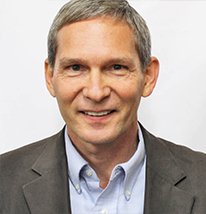
Dr. William Bosl
Associate Professor of Health Informatics, Clinical Psychology, and Data Science, University of San Francisco
Visiting Associate Professor of Pediatrics, Harvard Medical School
Dr. Bosl’s primary research focus is on developmental neuroscience and pediatric psychiatry. He is leading a series of projects to discover digital biomarkers in EEG signals for very early detection and monitoring of autism and other neurodevelopmental disorders. This work is being done primarily through Boston Children’s Hospital in the Computational Health Informatics Program.
All registered participants will receive detailed login information for the symposium by May 31 on the email used to register. If you do not receive login information by then, please email symposiums@sapienlabs.org
All sessions will be recorded and will be available for registered participants to view after the symposium. Registered participants will receive information about how to access recordings immediately following the conference.
****All times are shown in US EDT ****
Thursday, June 6, 2019
| 8:45 AM – 9:00 AM: | Welcome & Conference Introduction | |
| 9:00 AM – 10:45 AM: | EEG Resources, Toolkits and Repositories | |
| 9:00 AM – 9:30 AM: | Brain Imaging Data Standards (BIDS) for EEG Dr. Cyril Pernet, Senior Academic Fellow in Neuroimaging Sciences, Centre for Clinical Brain Sciences, The University of Edinburgh |
|
| 9:30 AM – 10:00 AM: | EEG Analysis with the MNE Software Dr. Alexander Gramfort, Researcher, Inria, Parietal Group, University of Paris–Saclay |
|
| 10:00 AM – 10:30 AM: | The Temple University Hospital Clinical EEG Corpus Dr. Joseph Picone, Professor of Electrical and Computer Engineering, Temple University |
|
| 10:30AM – 10:45 AM: | Open Q&A | |
| 10:45 AM – 11:15 AM: | Break | |
| 11:15 AM – 1:00 PM: | Novel Analytical Approaches to Brain Signals | |
| 11:15 AM – 11:45 AM: | Neuronal Avalanches in Brain Signals: What They Are and How to Study Them Dr. Dietmar Plenz, Chief, Section on Critical Brain Dynamics NIMH/NIH |
|
| 11:45 AM – 12:15 PM: | Applying Speech Processing Approaches to EEG Dr. Iyad Obeid, Associate Professor of Electrical and Computer Engineering and Bioengineering, Temple University |
|
| 12:15 PM – 12:45 PM: | Novel approaches for parameterizing EEG data Dr. Bradley Voytek, Associate Professor of Cognitive Science, Neuroscience, and Data Science, University of California, San Diego |
|
| 12:45 PM – 1:00 PM | Open Q&A | |
| 1:00 PM – 2:00 PM: | Break | |
| 2:00 PM – 4:15 PM: | Biomarkers and Applications of EEG | |
| 2:00 PM – 2:30 PM: | Modeling Distributed Brain Dynamics from Neuroelectromagnetic Data Dr. Scott Makeig, Director, Swartz Center for Computational Neuroscience, University of California, San Diego (UCSD) |
|
| 2:30 PM – 3:00 PM: | Predicting Pain with EEG Dr. Carl Y. Saab, Associate Professor, Department of Neurosurgery and Neuroscience, Brown University Warren Alpert Medical School and Rhode Island Hospital |
|
| 3:00 PM – 3:30 PM: | EEG Biomarkers of Fatigue and Alertness Dr. Christian Meisel, Harvard Medical School |
|
| 3:30 PM – 4:00 PM: | Sleep and the Multitaper Spectrogram Dr. Michael Prerau, Assistant Professor of Anesthesia, Harvard Medical School, Department of Anesthesia, Critical Care, and Pain Medicine, Massachusetts General Hospital |
|
| 4:00 PM – 4:15 PM: | Open Q&A |
Friday, June 7, 2019
| 8:45 AM – 9:00 AM: | Welcome & Conference Introduction | |
| 9:00 AM – 11:00 AM: | Common Methods, Challenges and Pitfalls (Tutorials) | |
| 9:00 AM – 9:45 AM: | Spectral Analysis, Filtering and Ways to go Wrong Dr. Narayan Subramaniyam, Postdoctoral Fellow, Aalto University Finland |
|
| 9:45 AM – 10:15 AM: | Challenges of Methodological Variability and Experimental Design Dr. Jennifer J. Newson Lead Scientist, Cognitive and Mental Health Assessment, Sapien Labs |
|
| 10:15 AM – 11:00 AM: | Common Connectivity Measures and their Challenges and Pitfalls Dr. Andre Bastos, Postdoctoral Associate, Picower Institute for Learning and Memory, Massachusetts Institute of Technology |
|
| 11:00 AM – 11:15 AM: | Break | |
| 11:15 AM – 1:00 PM: | EEG Resources, Toolkits and Repositories | |
| 11:15 AM – 11:45 AM: | A Platform for Large–Scale Home–Based Recording of EEG, with Gamified Assessment of Cognitive Function Dr. Brian Murphy, Chief Scientific Officer, BrainWaveBank |
|
| 11:45 AM – 12:15 PM: | New Tools in EEGLAB Dr. Arnaud Delorme, Principal Investigator, CNRS, Toulouse, France and Adjunct Faculty, University of California, San Diego (UCSD) |
|
| 12:15 PM – 12:45 PM: | An EEG Processing Pipeline Dr. Tim Mullen, CEO & Research Director, Intheon, Inc. |
|
| 12:45 PM – 1:00 PM | Open Q&A | |
| 1:00 PM – 2:00 PM: | Break | |
| 2:00 PM – 3:45 PM: | Biomarkers and Applications of EEG | |
| 2:00 PM – 2:30 PM: | Using EEG to Identify Conscious Experience Under Anesthesia Dr. Michele A. Colombo, Department of Biomedical and Clinical Sciences “L. Sacco”, Università degli Studi di Milano |
|
| 2:30 PM – 3:00 PM: | Quantifying Depth of Anesthesia with EEG Dr. Sarah Eagleman, Postodoctoral Scholar, Dept. of Anesthesiology, Perioperative and Pain Medicine, Stanford University |
|
| 3:00 PM – 3:30 PM: | Nonlinear Methods of EEG Analysis and Applications in Early Screening for Neurodevelopmental Disorders Dr. William Bosl, Associate Professor of Health Informatics, Clinical Psychology, and Data Science, University of San Francisco and Visiting Associate Professor of Pediatrics at Harvard Medical School |
|
| 3:30 PM – 3:45 PM: | Open Q&A | |
| 3:45 PM – 4:00 PM: | Closing Remarks |















